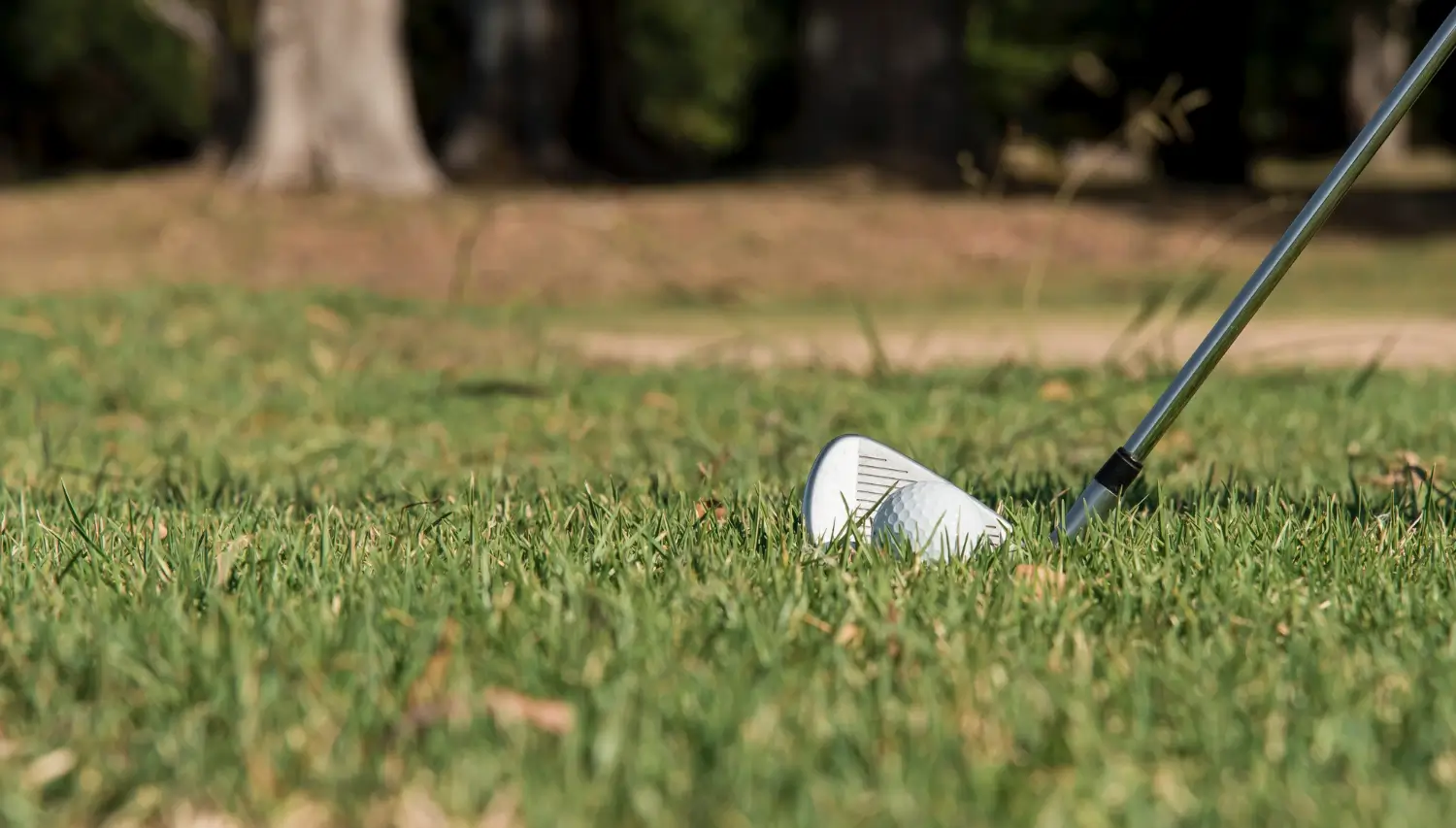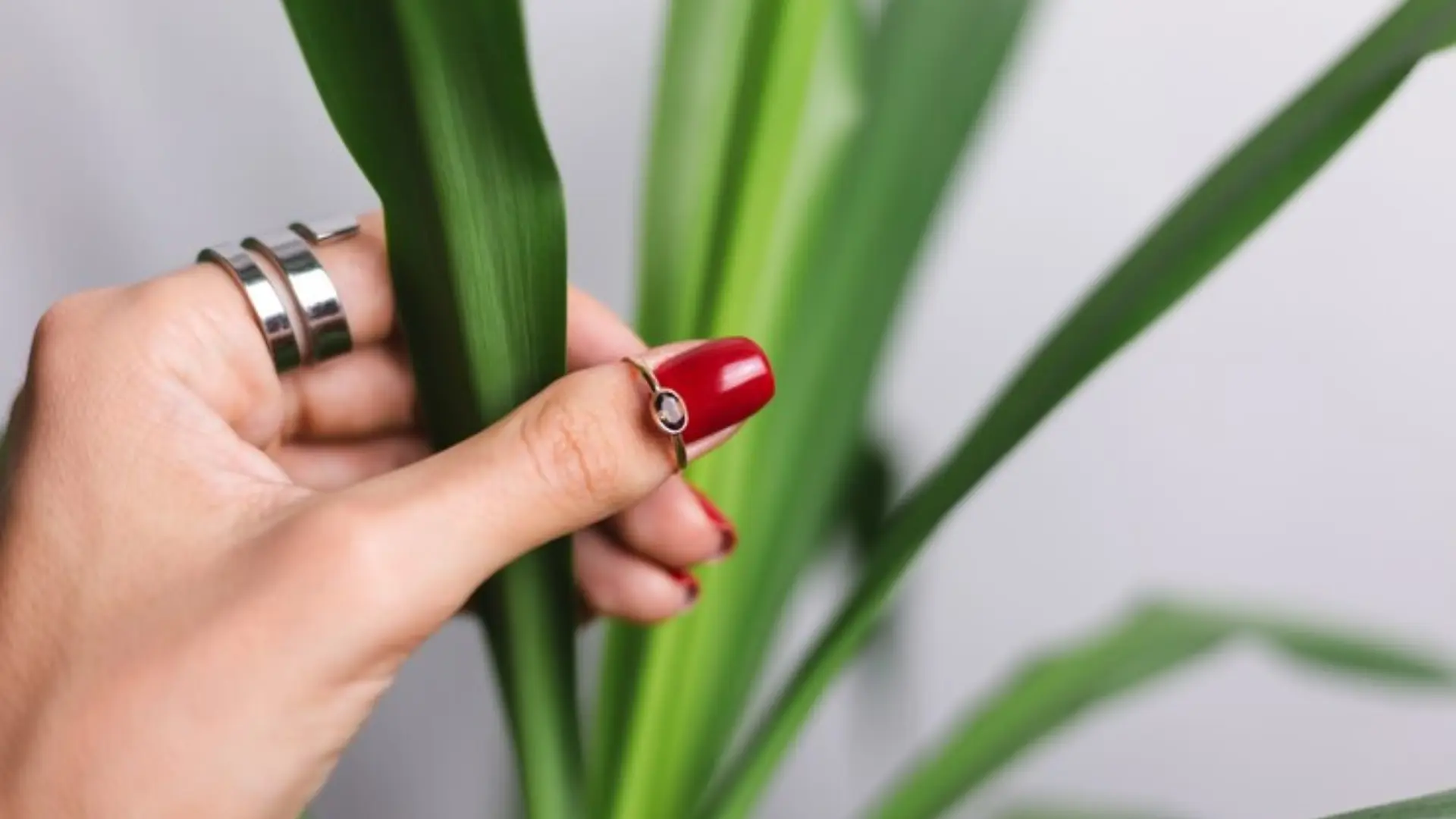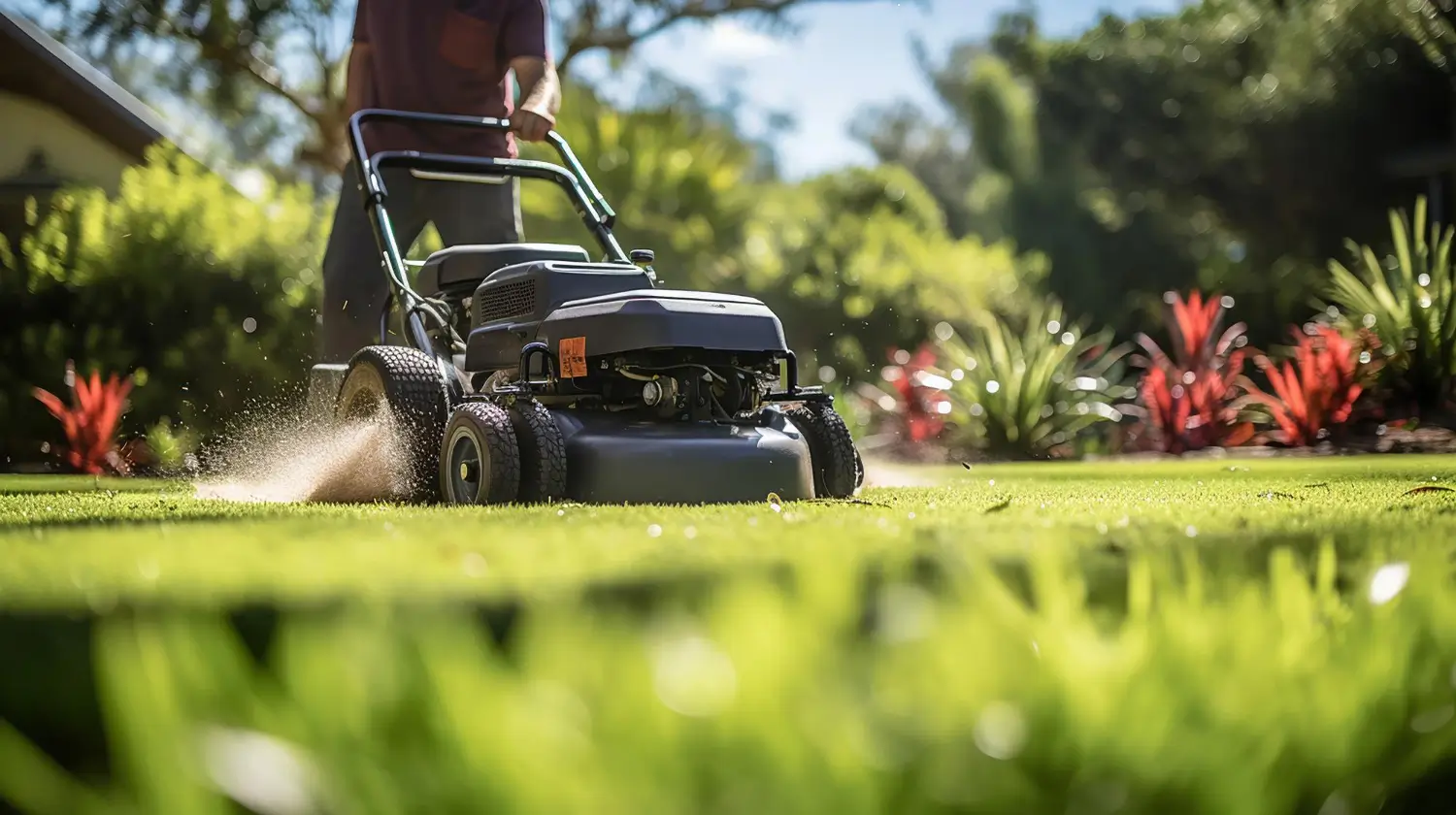
August 24, 2025

A well-maintained green lawn boosts the beauty of the home, offers a welcoming environment, and significantly increases property value. Lawns play a critical role in reducing soil erosion and contributing to the cooling effect around homes. These green spaces also provide oxygen, improve air quality, and create a habitat for small creatures, enriching the local ecosystem.
Bentgrass is a popular choice for those aiming for a tidy, golf-course-like lawn. Its fine-bladed texture and vibrant green color make it stand out. It is a famous lawn choice because it can easily form a thick, even surface. This makes it ideal for places where people want their lawns to look well-maintained.
Growcycle offers various types of grass seeds and products for cultivating the perfect lawn. Their suppliers are dedicated to quality and sustainability and provide the best bentgrass seeds, ensuring vibrant growth and a lush finish.
Bentgrass, scientifically known as Agrostis, is a type of turf grass known for its exceptional adaptability and excellent maintenance of a lush, green appearance. Its fine, thin blades create a smooth and dense layer, making it a popular choice for high-quality lawns, golf courses, and sports fields.
This grass grows well in cooler climates and can handle very short mowing, so it's often used in areas that need a neat, manicured look. While bentgrass does require extra care, like regular watering and mowing, the result is a beautiful, elegant lawn with a refined, clean appearance.
There are several varieties of bentgrass, each with unique characteristics suited to different uses, climates, and maintenance levels. Here are some of the most common types:
Colonial bentgrass is best suited for lawns that require less frequent mowing. Its resilience and rapid establishment make it more tolerant of drier conditions than other types. Colonial bentgrass forms a lovely, dense carpet with a classic lawn aesthetic.
Creeping bentgrass is a favorite for golf courses and sports fields due to its dense growth and excellent recovery from wear. This variety forms a thick, smooth surface and adapts well to low mowing heights. Its ability to thrive under close cutting makes it an excellent choice for ornamental lawns.
Velvet bentgrass is known for its extremely fine texture and soft, velvety appearance. It creates a dense, lush turf that is often used on golf course greens and high-quality ornamental lawns. Velvet bentgrass prefers cooler climates and can handle shade better than other bentgrass varieties. It thrives with low mowing heights but requires well-drained soil.
Bentgrass is a fine-textured grass species commonly used on golf courses, putting greens, and other high-maintenance turf areas, though it can also be planted in residential lawns under the right conditions. Here are some benefits of planting bentgrass on a lawn:
Bentgrass's fine texture and vibrant color give it a beautiful, eye-catching look. It can make any outdoor space appear neatly manicured and well-cared for, adding elegance and boosting the overall property value.
This grass type grows densely, offering even coverage and reducing unsightly bare spots. Its uniformity ensures a consistent look across the lawn, contributing to its polished appearance.
Bentgrass thrives under close mowing conditions, maintaining its lush appearance even when trimmed to short heights. This feature makes it ideal for those desiring a clean-cut, professional look on their lawn.
Its durability makes it a great option for lawns that are often used because it can tolerate high foot activity. Its ability to quickly recover from damage ensures that the lawn remains visually appealing despite constant activity.
Bentgrass offers superior turf quality with its smooth texture and adaptability to various conditions. This produces a long-lasting, visually appealing grass that can withstand weather conditions and look great year after year.
Gardeners can choose the right type of bentgrass with the help of the following advice:
Related: 5 Main Types of Grass and How to Care for Them
Planting bentgrass seed requires careful preparation and attention to detail, as bentgrass is a fine-textured, cool-season grass that benefits from precise planting methods. Here’s a step-by-step guide:
It is important for gardeners to thoroughly examine the soil in order to determine its nutrient levels, pH balance, and general structure. This information helps them decide on any needed soil improvements, allowing them to fix deficiencies and create better-growing conditions.
By ensuring the right nutrient balance and soil structure, gardeners can create an ideal environment for bentgrass to grow strong and healthy.
Proper soil preparation is key to successful planting, as it sets up a strong foundation for healthy plant growth. First, aerate the soil to improve its ability to absorb water and nutrients so roots can easily access what they need to thrive.
Loosening the soil also promotes healthy root growth by allowing air to move through it more easily. It’s also important to clear away any debris or old plants that could block seeds from reaching the soil, as leftover plant material can prevent seeds from getting the nutrients they need.
Choose high-quality grass seeds from trusted suppliers, considering the specific needs and conditions of the lawn, such as climate, soil type, and sunlight exposure are important. The right seed choice is critical to establishing a healthy, thriving lawn, as it ensures optimal growth and resilience against pests and diseases.
Seeding bentgrass should be carefully planned to ensure the best growing conditions. This type of grass thrives when planted during seasons that offer cooler temperatures and is found in early spring or fall. During these times, the weather is just right, providing the ideal environment for the grass to grow strong and healthy.
Ensuring that all seeding equipment is clean and working well is important. Clean equipment prevents dirt or unwanted materials from mixing with the seeds. When everything is in good working order, it facilitates the equal distribution of seeds throughout the grass. This way, the lawn can grow evenly and look nice.
A reliable irrigation system is important to support the new bentgrass seeds during their germination and growth phases. Watering the seeds regularly is crucial for their health.
When seeds are watered consistently, the young grass develops strong roots. This helps the grass become strong and well-established over time. Providing the proper amount of water can significantly impact long-term grass health and strength.
Regular care is essential to maintain a dense, healthy bentgrass lawn such as:
To take good care of a lawn, it is important to adjust watering practices to match what the grass actually needs. It's crucial to supply adequate water, but it's just as crucial to avoid giving too much. When grass gets just the right amount of water, it grows stronger and healthier.
A helpful method is to water the lawn deeply but not too often. This way, the grass roots grow deeper into the soil, making them stronger and better at finding water when needed. A strong root system keeps the lawn lush and healthy even during dry spells.
A balanced and appropriate fertilization program is essential to maintaining bentgrass's health and aesthetic appeal. This schedule should provide all the essential nutrients that bentgrass needs to thrive.
Feeding the grass periodically encourages lush and thick growth. A well-fed lawn will be vibrant in color and more resilient to wear and tear. It helps the grass stay strong and beautiful, even in tough conditions.

The need for environmentally friendly and nutritionally sound plant development is more significant than ever in today's fast-paced agriculture industry. Soil health, biodiversity, and long-term sustainability have all been negatively impacted by synthetic fertilizers and chemicals.
LEARN MORE →It is important to keep the lawn at a good height and not cut too much grass at once. Regular mowing helps the grass grow healthy and look even. Cutting the grass often at the right height helps the lawn stay strong and nice-looking. Regularly checking the height of the grass and trimming it to the right length is important for the overall appearance of the lawn.
Always watch the lawn for any signs of pests, such as bugs or weeds. If any problems are noticed, they should be dealt with quickly to prevent them from spreading and causing more issues. Using a method called integrated pest management (IPM) can help manage pests in a way that is less harmful to the environment.
If chemicals are needed, choosing selective herbicides that are specifically meant to target certain weeds can help keep them under control without damaging the healthy grass. Keeping the lawn healthy and beautiful involves regularly checking for these issues and taking care of them as soon as possible.
A thatch build-up coating of dead grass and roots can keep bentgrass from receiving the nutrients, water, and air required. This happens because the thatch can become too thick, almost like a barrier on top of the grass. When bentgrass can't breathe properly or get enough water and food, it can struggle to grow and stay healthy.
To help bentgrass grow strong and healthy, it is important to regularly remove the thatch through dethatching. By removing the thatch with specialized equipment or tools, air, water, and nutrients may more readily reach the grassroots. This will give bentgrass everything it needs to flourish and look its best.
Aerating the soil regularly helps break up compacted soil, which lets plant roots grow better and stronger. When the soil is aerated, bentgrass has a healthier growing environment. This process helps the grass grow well, making the whole lawn look greener and fuller. Aeration also lets air reach deeper into the soil, improving the health of the lawn and making it more lively and lush.

Aeration removes small plugs of soil from the grass, helping it stay healthy and creating the ideal environment for new grass seeds to grow. Overseeding involves spreading new seeds over an existing lawn, which is an easy way to achieve thick, dense grass.
LEARN MORE →To prepare bentgrass for winter, start by raising the mowing height. This means cutting the grass a little longer than usual. Additionally, before the cold season arrives, fertilize the lawn one last time. Doing these things helps the grass to better handle the chilly temperatures. When spring comes, the lawn will be stronger and healthier because it has the right care during winter.
Regularly checking the lawn is important because it helps spot problems early. When issues are found quickly, they are easier to fix on time. Looking over the lawn often, its health stays good, and small problems are stopped before they get bigger. This reduces the chance of serious problems later on, keeping the lawn healthy and green.
Here are some common problems with bentgrass and how to fix them:
Achieving a high-quality bentgrass lawn requires careful attention to seeding, maintenance, and proper care. Homeowners can create dense, lush, and professional-grade turf by selecting the right bentgrass seed and following expert advice on watering, mowing, and fertilizing. With the right approach, bentgrass can transform any lawn into a stunning, resilient outdoor space that boosts the landscape's beauty and durability.
Choosing the right seeds and products is also important when growing a healthy Bentgrass lawn. Growcycle is a top supplier, offering a variety of high-quality Bentgrass seeds and lawn care products designed for this type of grass.
Disclaimer: This material is for informational purposes only and should not be relied on for legal, medical, financial, or any other form of professional advice.
Early spring or late summer is ideal for planting bentgrass, as these seasons offer moderate temperatures and optimal growing conditions.
Water bentgrass deeply but infrequently, ensuring that the soil remains moist without becoming waterlogged. This encourages deep-root growth and reduces stress.
Bentgrass prefers cooler climates, but certain varieties may adapt to warmer areas with careful management and selection.